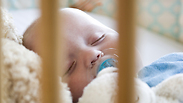
While in the Jewish population the infant mortality rate is 2.6 per 1,000 live births, in the Arab population it is 6.4 per 1,000 live births.
The reason for the gap, according to Health Ministry officials, is the high rate of congenital defects and genetic diseases among babies in the Arab population. One of the main reasons for that is cousin marriages.
Another reason is that Arab parents tend not to terminate the pregnancy in case of a defect or disease detected in the fetus.
In addition, Arab women usually give birth at a very early age (below 20), and are therefore more prone to complications compared to Jewish women.
The report states that narrowing the gap between Jews and Arabs is one of the Ministry's main tasks.
"We encourage the Arab population to take folic acid which helps prevent congenital defects, and in (the southern predominantly Bedouin city of) Rahat we subsidize the addition of folic acid in bakeries," said Prof. Itamar Grotto, head of public health disease prevention and health promotion at the Health Ministry.
"In addition, several vaccinations have been added to the health basket in recent years, and the response in the Arab population has been very high. We expect it to reduce the mortality rate."
Birth weight, mother's age among risk factors
According to the figures, which apply to 2011, the overall infant mortality rate in Israel among babies under the age of one is 3.5 per 1,000 live births. Among the Jewish population, there is a constant decrease in the mortality rate – from 2.9 in 2008 to 2.6 in 2011.
Among the Arab population, the infant mortality rate has gone down from 7.3 in 2009 to 6.4 in 2011.
The highest infant mortality rate was detected in southern Israel: 3.7 among the Jewish population and 11.4 among the Arab population.
Babies under the age of one who are at a higher risk of dying are those who were born to very young or particularly old mothers.
The mortality rate among infants born to women under the age of 20 is 2.9 times the mortality rate among infants born to women aged 30 to 34. The mortality rate among infants born to women over the age of 45 is 2.43 times higher than among infants born to women aged 30 to 34.
Another factor which puts the baby's life at risk is its weight. The mortality rate among infant who weighed less than 1 kilogram when they were born is 410.8 per 1,000 live births compared to 1.4 per 1,000 among babies who weight more than 2.5 kilograms at birth.
Another factor is the week of birth. The mortality rate among babies born at 30 weeks of pregnancy is 48.8 per 1,000 live births, compared to 2.6 per 1,000 at 37 weeks of pregnancy.
Another risk is a multi-fetal pregnancy: 13.7 deaths per 1,000 births compared to 3 per 1,000 in a single fetus pregnancy.















